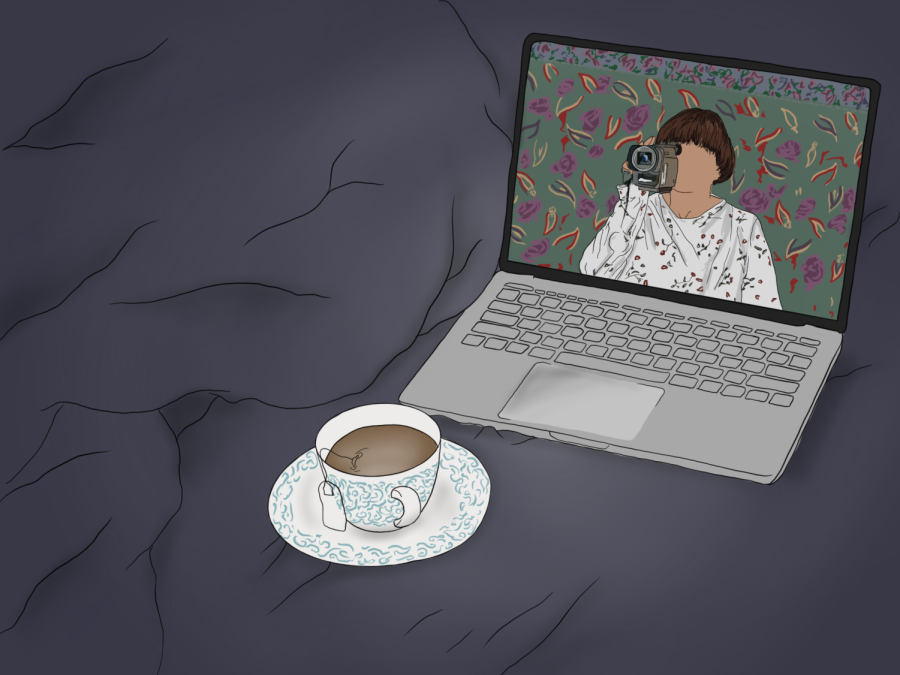Off the Radar: ‘The Gleaners and I’ and the art of picking up what’s left behind
“Off the Radar” is a weekly column surveying overlooked films available to students for free via NYU’s streaming partnerships. “The Gleaners and I” is available to stream on Kanopy.
The documentary “The Gleaners and I,” directed by Agnès Varda, follows the tradition of gleaning and why people do it. The film is available for free via NYU’s streaming partnerships. (Staff Illustration by Aaliya Luthra)
March 25, 2022
“The Gleaners and I” (2000), directed by Agnès Varda, is a documentary about people in France who are invested in the tradition of gleaning. Gleaning is the act of picking up the leftovers from farms after harvest. Though the practice of gleaning has shifted over time, the posture remains the same: bent over, a position which Varda calls a humble gesture.
Why should anyone glean? After all, picking through the trash is traditionally frowned upon. Yet through her reflexive filmmaking, Varda explores the rich history and humble pleasures of the act, and shows how significant gleaning can be.
Some of the gleaners do it out of necessity. In potato country, tons of potatoes are dumped on the farm after the machine harvests, and farmers welcome gleaners who pick up the rejected potatoes that are too small, too big or misshapen. We witness picking from a single mother, a man collecting for the food bank and a particularly rugged individual who lives in a trailer without electricity.
Other gleaners do it for art, such as a Russian bricklayer profiled by Varda. Around him are his pieces, a jungle of totem towers built from what he’s found in dumps: plates, old TVs, pots and an eerie amount of dilapidated baby dolls.
Varda plays with themes of time and change in “The Gleaners and I.” She shows that gleaning has gradually evolved from a social activity for women to an essential activity for people on the streets who need to survive. Those who glean today are often gleaning by themselves in a dog-eat-dog world.
Varda then brings us into a market after it has closed. We observe a man eating as he collects leftover apples, parsley and onions from the scrap boxes on the street. Fascinated, Varda follows him around. We learn he studied biology and has a master’s degree. For his livelihood, he sells magazines outside of a train station. When he takes us to his home, we find out he lives in migrant housing, where many of the residents are illiterate. During his spare time, he works as a volunteer, teaching reading and writing in the basement of the building. Through these sequences, Varda shows the humanity behind gleaning.
The rules on gleaning are unclear in France, and the exact rules change depending on the province. What was once a simple tradition has become restricted and subjected to legal bureaucracy. In fields and streets, Varda interviews jurists in full garb about the rules of gleaning. Though the act of gleaning has been policed to some degree, it is also protected by law.
Varda is not shy about revealing her affinity for capturing decay. At one point, Varda zooms into the ridges of her hand with her digital camera, saying they are a reminder that the end is near. She films the rot and mold spreading on her ceiling and likens it to Tàpies, Guo-Qiang and Borderie art pieces.
Varda’s quirky but personal nature is comforting for both the subjects and the viewer. Her filmmaking seems to mock uptight documentarians. In one sequence, Varda eccentrically includes a minute-long clip of her lens cap dangling, which she filmed by accident. The simplicity of these candid moments show that Varda is not only interested in showing the vulnerability of the gleaners but also the vulnerability of filmmaking itself. As Varda shoots the little bits and pieces of the gleaner’s lives, she herself is participating in the act through her lens. The documentary becomes meta — Varda is gleaning the gleaners. Ultimately, Varda’s quest to preserve the custom is also a self-portrait.
At its core, “The Gleaners and I” is political. The film is a statement against the environmental waste we produce every day. It forces us to think: what’s left behind?
Contact Amira Aboudallah at [email protected]



























































































































































